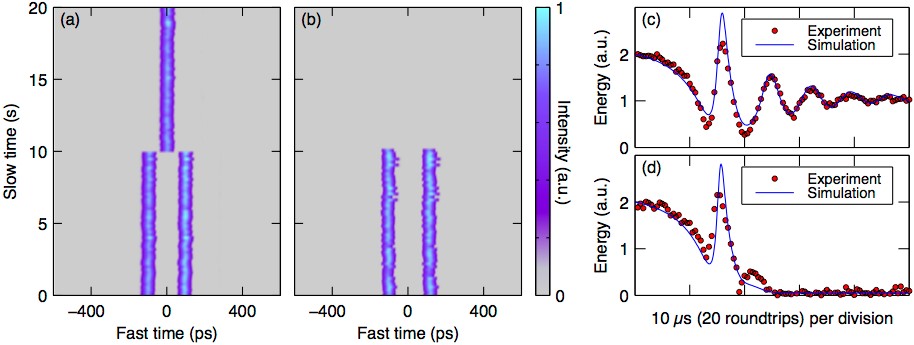Non-Conservative Interactions
Gian-Luca Oppo
Single peak waves (known as solitons) are known to travel through each other if the total energy is conserved. The situation is very different in systems outside thermodynamic equilibrium in the presence of energy input and output. A recent collaboration between Strathclyde and the University of Auckland in New Zealand has investigated the controlled collisions of two dissipative solitons in an optical fibre ring and found that they either merge (Fig. 1 left) or annihilate each other (Fig. 1 right).

Our numerical predictions have been beautifully confirmed in experiments (see Fig. 2). Before the collision, the total energy in the system is conserved but afterwards it is either halved (Fig. 2 (c)) or erased (Fig. 2 (d)). The missing energy is released in the form of short pulses that are fully controllable by the operator. The results have appeared in the New Journal of Physics (Vol. 18, 033034, 2016).

This phenomenon can find natural applications in the control of mode-locked pulses in photonic devices and in the collision of matter-wave solitons in trapped Bose-Einstein condensates for quantum technologies.
18th April 2016